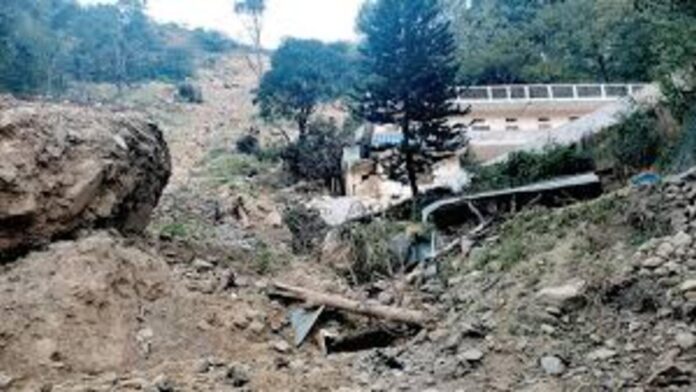The “sinking” town of Joshimath will be visited by Uttarakhand Chief Minister Pushkar Singh Dhami on Saturday (January 7). Land subsidence has led to fissures in at least 500 homes in the Uttrakhand town, a place of significant religious and cultural significance, posing a threat to their stability. The collapse of a temple on Friday evening in Joshimath’s Singdhar ward further alarmed the neighborhood’s residents, who already live in constant fear of a catastrophic event. Many experts have cautioned that it’s unlikely that many of the town’s houses will survive.
Joshimath, a spiritual centre in Uttarakhand where Adi Shankaracharya, a religious reformer, attained enlightenment in the eighth century, has come to national attention for a very unsettling reason. Huge fissures have appeared in several local homes, and because the town is perched on a precarious mountain slope, residents are terrified that it may completely sink.
On January 6, Chief Minister Pushkar Singh Dhami ordered the urgent evacuation of 600 families who were living in homes with significant cracks. “Keeping people alive is our first priority. Approximately 600 residents residing in Joshimath’s threatened homes have been advised to relocate; “After examining the situation in the sinking town with officials through video conference, Dhami told reporters.
An already stressful situation became much more tense when a temple fell on Friday night in Joshimath’s Singdhar ward, adding to the alam of locals who have long lived in constant fear of a big catastrophe. Fortunately, no one was inside the temple when it collapsed because it had been left abandoned during the previous 15 days after developing significant fractures, according to residents.
Although land subsidence has been a concern for more than a year, it has gotten worse recently, according to experts.
The worst affected location is in Marwari, where an aquifer spilled three days ago. While water from the aquifer is continuously rushing down there with enormous velocity, several residences there were destroyed to varied degrees.
On the request of the locals, all construction works for major projects like the NTPC’s hydroelectric plant and the Chardham all-weather road (Helang-Marwari bypass) have been halted till further notice.
According to previous local municipality president Rishi Prasad Sati, the Auli ropeway service was also suspended after a significant crack appeared beneath it. The largest fracture in all of Asia appeared beneath the Auli ropeway. On the request of the locals, all construction works for major projects including the Chardham all-weather road and the NTPC hydroelectric project have been halted till further notice.
According to Chief Minister Dhami, alternative sites should be found in Pipalkoti, Gauchar, and other locales for the afflicted people’s long-term rehabilitation.
A group of experts from the state administration have been sent to the area to evaluate the situation. As a precaution, teams from NDRF have also been stationed there, according to Lalit Narayan Mishra, the Chamoli Chief Development Officer (CDO), who spoke on Friday (january 6). “We need to be on guard for the future, thus the deployment of NDRF is being done as a precaution,” he stated. He said, “NDRF has been contacted due to numerous landslides, and the team of experts is examining the impacted areas since this morning.
The town is in a state of panic. Many people have fled their houses out of fear. The administration is simultaneously moving people to gurudwaras, schools, and municipal facilities.
Joshimath’s subsidence has been caused by a combination of manmade and natural sources, according to specialists. Director of the Wadia Institute of Himalayan Geology Kalachand Sain cited three main causes of the current problem in an interview with news agency.
1) The weak foundations of Joshimath: The town was built on the ruins of a landslide caused by an earthquake more than a century ago.
2) It is situated in seismic zone V, which is a more earthquake-prone area.
3) The gradual deterioration of the rocks’ cohesive strength due to weathering and water percolation.
Disasters have also been brought on by indiscriminate construction. As Sain emphasised, “Joshimath serves as the entry point for Badrinath, Hemkund Sahib, and the ski resort of Auli. Long-term haphazard construction projects have been underway without consideration for the amount of stress the municipality can handle. All throughout the place, hotels and eateries have proliferated. Both the strain on the inhabitants and the volume of tourists has grown significantly.”
Sain said that it’s possible that the flash floods in the Rishiganga and Dhauliganga rivers last year, as well as the Himalayan rivers’ descent and the region’s significant rains, have made the situation worse.




